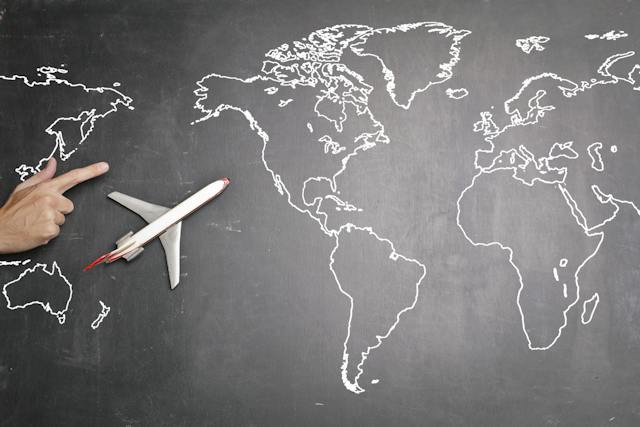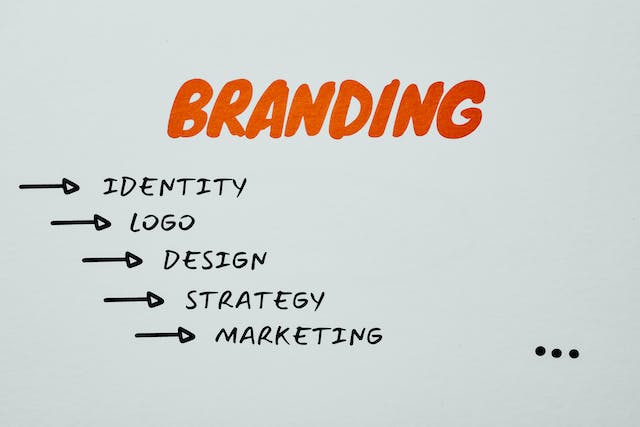Have you ever asked yourself why global companies effortlessly scale their marketing campaigns across continents, languages, and cultures? Let’s be real; you’re not just running a local bake sale anymore. You’re operating—or aspiring to operate—in a world shrunk by digital corridors and booming with economic potential. But hang on, how exactly does one navigate this babel of languages and still come out on top? That’s where your head is at, isn’t it?
Welcome to the hidden cornerstone of global business—multilingual desktop publishing (DTP). This game-changing capability is the unsung hero in your multinational toolkit; yes, it is your invaluable accomplice in crafting documents, brochures, and even eBooks that speak to every customer in their mother tongue.

Wait, you’re still married to the good old “one-size-fits-all” English approach? Yikes!
After a deep dive into the transformative power of Multilingual DTP, though… trust us; you’ll be all in.
Multilingual DTP doesn’t just put text into another language. No, it goes a step further—adapting graphics, formatting layouts, and heck, even realigning cultural cues so your message isn’t just heard but deeply felt.
Your competitors are doing it, but are they doing it right? Odds are, they’re missing out on the nitty-gritty; they’re still just translating words, not meaning.
In the grand scheme of things, Multilingual DTP is not just a tool but a strategy that will revolutionize how your business talks and how it listens to the world. Your outreach goes from zero to hero—yes, just like that. You’re not merely scratching the surface of globalization; you’re taking a deep dive into its core, understanding its rhythms, and mastering its flows. So, buckle up; you’re in for an enlightening journey that will equip you with the know-how to effectively transform your multinational communications. Trust us, you don’t want to miss this!
Understanding The Basics of DTP
Desktop Publishing (DTP), huh? It sounds like some tech jargon from a Silicon Valley board meeting, doesn’t it? Hold your horses. We’re diving in! At its core, DTP is the practice of creating high-quality print or digital documents using specialized software. Think of it as your high-octane Microsoft Word on steroids—capable of layouts, design tricks, and, yes, even handling multiple languages like a pro. So, why should you, someone spearheading efforts in a multinational company, care? Ah, my friend, that’s where the magic lies.

We live in a world that doesn’t speak one language; it’s a veritable Tower of Babel out there. That snazzy product manual you just rolled out in English? Useless to someone more comfortable reading Japanese or German. That’s the unfortunate reality. Now, imagine if your team could effortlessly publish documents in multiple languages. Wouldn’t that be something? DTP is the secret sauce to making this happen.
Let’s break it down, shall we? You get software that can handle complex layouts, integrate high-resolution images, and—this is the kicker—accommodate text in multiple languages. Not just Latin-based alphabets, mind you, but also Arabic, Cyrillic, etc. So yes, your Russian clients won’t be stuck squinting at Google-translated text; they’ll get the real deal. And before you say it’s too complicated, let us quash that right now. Trust us, you don’t need to be a tech wizard to get the hang of DTP software.
As for cost—yeah, we get it; nobody likes hidden fees or ballooning budgets. But hear us out! Much of the DTP software out there works on a subscription basis. You’re not breaking the bank but investing in a tool that streamlines your multilingual content, from brochures to eBooks. In the long run, the ROI? Absolutely bonkers! We’re talking about increased reach, customer satisfaction, and, let’s not forget, sales.
Do you see the potential here? Are the wheels turning yet? Good, they should be. If your company wants to be a global powerhouse—heck, even if you’re just eyeing multiple markets—you can’t afford to neglect the power of DTP in a multilingual context. Your customers are out there, yearning for content in a language they understand.
The Multifaceted Role of Multilingual DTP: 5 Ways It’s Changing Global Business
1. Expanding Global Reach
How far do you reckon a multinational can spread its wings without genuinely resonating with the diverse audience it’s trying to woo? We’ve moved past the days of one-size-fits-all; today, it’s all about precision—hitting the bullseye every single time. And no, we’re not just talking about linguistic translation; it’s way deeper than that. Remember the last time you interacted with a brand and thought, “Wow, they just get it?” That’s the power of geo-targeting and localization of content.
Now, you might be thinking… why all this fuss about localizing? Well, let us break it down for you. In a globalized world—yes, we’re looking at you, multinational giants—understanding local nuances, slang, cultural tidbits, and taboos isn’t a mere nicety; it’s a necessity. Think about it; would you prefer a product/service that just “feels” right or one that seems awkwardly foreign? Exactly; most of us lean toward the former.

Multilingual Desktop Publishing (DTP) is the unsung hero here. It’s not just about converting words from English to French, Spanish, or Mandarin; it’s about understanding that a meme making waves in the US might fall flat in Japan or that a color palette appreciated in Italy might not be the vibe in India. It’s about ensuring that visual elements resonate, that typography sings in harmony with local aesthetics, and, yes—that content aligns perfectly with the pulse of each unique demographic.
Invest in Multilingual Desktop Publishing; it’s not just a tool. It’s your ticket to truly expanding your global reach. And for those on the fence… well, ask yourself: Do you want to be just another brand in the crowd, or do you want to stand out, be recognized, and genuinely connect? The choice is yours, and the world—quite literally—is waiting.
2. Enhancing Brand Consistency
Regardless how “diverse,” “global,” or “inclusive” your company claims to be—let’s get real, folks—brand consistency is where the rubber meets the road. Think you can just sling a logo and a color scheme across various countries and call it a day? Hold on a minute… you might be setting yourself up for a massive brand fail.
So why does brand consistency matter this much? Well, imagine you’re out on the town in Paris. You see those iconic golden arches; you know it’s McDonald’s, even if the sign says “Le McDonald’s.” It’s not just a logo, it’s an emotional signature; a familiar friend in a foreign land. That’s the power of brand consistency, and Multilingual Desktop Publishing (DTP) is the secret sauce that cooks it to perfection.

Yes, we’re saying the unspeakable—it’s not just your creative team’s responsibility. Multilingual DTP has you covered when it comes to aligning visual elements like fonts, images, and layouts, across various languages and cultural norms. These may seem like the smaller pieces of the puzzle, but let me tell you, they add up to a cohesive whole. Uniformity in your visual branding elements ensures that whether someone interacts with your brand in Tokyo or Timbuktu, the experience is consistent. And remember, consistency builds trust, which—guess what?—translates to brand loyalty and, inevitably, increased sales.
Now, you might be thinking, “Great, but how does uniform messaging fit into all of this?” Hold your horses; we’re getting there. Multilingual DTP doesn’t just stop at making your brand “look” the same; it also ensures that your messages “feel” the same. With native-language proofing, context sensitivity, and semantic checks, it aligns your corporate lingo and tonality, so that the words don’t just translate, they resonate.
3. Streamlining Marketing Campaigns
Regardless of how niche or expansive, every business faces the same question—how do you cut through the noise and reach your target audience? Yeah, social media is all the rage, but what about cultural nuances, language barriers, and, god forbid, memes that are ‘lost in translation’? This is where Multilingual DTP enters, not as a caped superhero but as a downright game-changer for your marketing campaigns.

Picture this—you’ve got a killer ad campaign. It’s generating buzz, likes, shares, and, yes, revenue. But what happens when you attempt to scale this across borders? That catchy slogan suddenly sounds like gibberish in another language; your well-curated graphics are baffling or even offensive. You could go back to the drawing board, but who has the time, right? Enter Multilingual Desktop Publishing (DTP).
With DTP, you’re not just translating text; you’re localizing entire campaigns, adapting everything from font sizes to cultural idioms. Imagine tweaking a phrase here a color scheme there, and voila, you have a localized ad that retains the original’s mojo while connecting on a visceral level with a whole new audience. That’s not just smart; it’s revolutionary.
We get it. Tech solutions often promise the moon and instead deliver a moon-shaped rock. But this is different.
You’re leveraging data, technology, and cultural insights to create adaptable, resonant messages. The best part? It’s not that complicated—or expensive! Let’s break it down: the DTP software itself may be an investment upfront. Yet, in the grand scheme of things, you’re spending pennies to generate dollars (or euros, or yen, or whatever currency your target audience uses).
Don’t let the tech jargon scare you off. Think about it this way: you’re essentially getting a room full of marketing experts from every region your brand touches, all wrapped up in one neat digital package. So, while your competition is still fumbling with Google Translate and culturally misplaced memes, you’re hitting the ground running with campaigns that resonate.
4. Facilitating Internal Communication
They say communication is the heartbeat of any thriving organization—and, boy, aren’t they right? Dive deep into the belly of any multinational company; what do you find? Teams—dispersed across continents, speaking different tongues, trying to sync up on projects. It’s like trying to dance to ten songs playing at once: chaos, right? But here’s where Multilingual Desktop Publishing (DTP) steps in, like a maestro conducting a global orchestra.
Remember the days when you’d send a document to your team in Tokyo, and—god forbid—it was riddled with formatting issues? Or that heart-sinking moment when a vital report, written in Portuguese, made zero sense to your Dutch team, causing the meeting to end in, well, let’s not revisit that, shall we?

Enter multilingual intranets. Imagine a platform where every team, regardless of their native tongue, can pull up any company document in their own language; magic, isn’t it? Gone are the days of miscommunication and the nerve-wracking “…is this right?” moments. Everything is neatly tailored, ensuring you and your global team are on the same page—literally.
And hey, let’s talk global team collaboration. We’ve all been on those calls, right? The ones where three people are debating a point, each in their language, and you’re there, sipping your coffee, just wishing for a translator. Multilingual DTP doesn’t just tackle text; it embraces speech. Whether you’re sharing documents, doing video calls, or just sending out a simple email, the clarity it brings is nothing short of a revelation.
5. Increasing Regulatory Compliance
New state, new country, new market—sounds exciting, right? But here’s the catch: with each fresh territory you venture into, a whole new set of rules is waiting for you. And trust us, it’s not just about the language barrier. The deeper dilemma? Regulatory compliance. Yes, we’re diving into the thrilling world of legal documentation and industry-specific standards. Let’s be honest: it’s a maze out there!
Ever thought you’d nailed it with your company’s legal documents, only to find out you missed a crucial local law? Or—dare we say it—misinterpreted an industry-specific standard because it wasn’t in your native language? We’ve all been there. It’s that sinking feeling, the dread of having overlooked something so crucial. But here’s where Multilingual Desktop Publishing (DTP) swings in to save the day.

Picture this: All your vital documents are immaculately formatted in the styles and languages of your target markets. With DTP, it’s not just about translation. Oh no, it’s a lot more intricate than that. It’s about understanding, respecting, and adhering to local norms, laws, and intricacies, making you look less like a flustered tourist and more like a local industry pro. And guess what? Your stakeholders notice.
You can keep scribbling notes, Googling every local regulation, and attempting (and often failing) to adapt to each new region’s demands. Or you can step into the future with DTP. Get your legal documentation spot on, impress with your industry-specific standards knowledge, and show the world you’re not just here to play—you’re here to lead.


